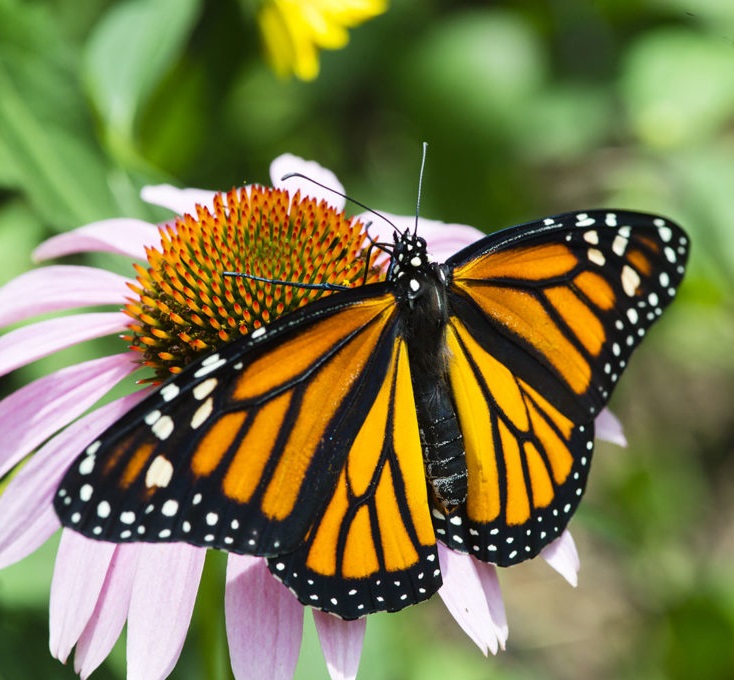 The Nebraska Game and Parks Commission and the Midwest Association of Fish and Wildlife Agencies (MAFWA) welcome public comments through May 31 on a draft conservation plan that provides a blueprint for reversing the decline of the eastern monarch butterfly population.
The Nebraska Game and Parks Commission and the Midwest Association of Fish and Wildlife Agencies (MAFWA) welcome public comments through May 31 on a draft conservation plan that provides a blueprint for reversing the decline of the eastern monarch butterfly population.
The draft plan, called the Mid-America Monarch Conservation Strategy, builds on existing efforts of state, federal, and local agencies, as well as private organizations and individuals. It covers a 16-state region from Texas to the Upper Midwest, which encompasses the primary production and migratory habitat areas for eastern monarchs. Other eastern monarch states also are collaborating with the plan.
The plan identifies conservation goals and strategies for improving habitat for monarchs and other pollinators. Potential habitats include natural areas, agricultural lands, urban lands, and rights of way. Game and Parks, other state wildlife agencies, and partners will plant milkweed, which monarchs need to survive, as well as other blooming plant species, to benefit both monarchs and other pollinator species.
Monarchs produce multiple generations each year and undertake a lengthy fall migration from the United States, though Nebraska, and southern Canada to the forested mountains of central Mexico, where they overwinter. The goal of the Mid-America Monarch Conservation Strategy is to coordinate state and partner efforts to restore and enhance habitat to support an average overwintering population in Mexico occupying about 15 acres (6 hectares).
Game and Parks, along with partners and volunteers, have planted milkweed in state parks and recreation areas, along roadways, the Cowboy Trail, natural areas and community and backyard gardens.
“We are committed to conserving the monarch and all pollinators for the long-term,” said Nebraska Game and Parks Director Jim Douglas. “Pollinators are essential to maintain healthy ecosystems. When we work together to create habitat for pollinators, all species of wildlife benefit and thrive.”
Eastern monarchs, found east of the Rocky Mountains, have declined by more than 80 percent over the past 20 years. This decline is primarily due to loss of habitat containing milkweed, which is required for reproduction, and nectar plants. In 2014, the monarch was petitioned for listing under the federal Endangered Species Act, and a decision on whether listing is warranted is expected in 2019.
The plan primarily focuses on voluntary and incentive-based habitat restoration and enhancement efforts, but also includes education and outreach, research, and monitoring needs related to monarch conservation.
For more information, a copy of the draft strategy, and how to submit comments, visit the MAFWA website at Mid-America Monarch Conservation Strategy.
To learn more about monarchs in Nebraska, or how to help visit outdoornebraska.gov/monarch.
